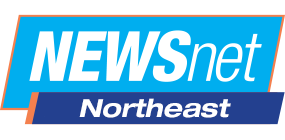Before the global pandemic hit in 2020, a few businesses began to embrace remote work's benefits. When the lockdowns started, nearly every industry was forced to adapt to a remote working environment. Since then, many companies have seen how beneficial remote work can be. Employees also have, with 98% of remote workers wanting to continue working from home.
However, many companies were forced to adapt on the fly, creating a remote work infrastructure born of desperation rather than proper planning. Future-proofing the communications network that empowers your remote workforce means taking the time to reconsider how you approach the management of that network.
Is remote work here to stay?
Employees want to keep working remotely, but are the companies they work for obliging? The answer can be found in the sharp rise in permanently remote jobs over the past few months. The first quarter of 2022 saw remote positions accounting for nearly 25% of the workforce. That number is impressive and represents a significant increase from the previous quarter's 18%.
Although it remains to be seen if the effect will last long-term, the changing work dynamic forced on companies by the pandemic seems to have allowed the benefits of remote work to take hold among employees and employers.
Future-proofing your communications network
If remote work is here to stay in your company, it’s crucial to look at the systems you’ve put in place. Many organizations hastily implemented many of those systems due to lockdowns during the pandemic, so ensuring that future disruptions have minimal impact on employee and business workflows is paramount. Below are some tips your business can use to keep your communications network strong for remote and onsite workers.
Be prepared to deal with inconsistent connections
You've probably dealt with inconsistent internet speeds if you have remote employees. At your office, you have an expensive and highly reliable internet connection. Even with the proliferation of broadband access, home internet connections aren't always as stable. This is especially true for employees with families, who must share their bandwidth allowance with an entire household.
These slowdowns can impair work progress. If they are a significant problem within your organization, you might consider reimbursing part of your staff's internet bill. Helping to ensure everyone has a connection that's up to the standards required to perform productively will help mitigate the problem.
Set equipment standards
Another area where quality varies considerably with remote workers is equipment. Some of your employees will have top-of-the-line cameras and headsets, while others will have low-quality built-in units that make it hard for them to hear you and vice versa.
Ideally, you'll provide your staff with equipment that meets the standards you want them to uphold, as you would if they were in the office. At a minimum, you should have a set of standards for quality that each employee is expected to meet.
Make security a priority
Remote work adds additional stress to your company's cybersecurity. For one, it moves more of your business's operations from an internal LAN onto the open internet. On top of that, you may be relying on the home equipment of employees, where your IT department doesn't have the strict control over updates and security patches they otherwise would.
Because of this, it's vital to make an even greater focus on security. As you choose the tools, you'll be using for remote work going forward, investigate how each handles security. You may also consider setting up a VPN or SASE solution for your employees to connect to provide an additional layer of protection.
Examine which features your staff uses
When picking the tools that will carry your company's communications network into the future, it's essential to look at actual vs. perceived needs. Examine how your employees are currently communicating. Are they making or receiving more calls? Are those calls primary voice or video? How do other technologies such as SMS and instant messaging factor in?
Perhaps more importantly, what do your employees feel is missing from or impeding their workflow? Once you build up a list of what your company needs, it'll be easier to cut through the marketing hype as you evaluate your options and focus on which providers will best solve your problems.
Unify as much as possible
Once you've decided which technologies you need in a communications network, you should try to unify your solutions as much as possible. Look for providers that give your business as many tools as possible to achieve its communication strategy. Doing so will limit the number of invoices you need to worry about, provide you with a single point of contact should something go wrong, and minimize integration problems between disparate offerings.
Stick with business-grade solutions
Since many companies were forced into remote work, the tools used were whatever happened to be available at the time. This means many businesses were, and potentially still are, running on consumer-grade software such as the free versions of Skype or Zoom. These solutions are acceptable for consumers but leave much to be desired for businesses.
You may be tempted to cut costs with free tiers or cheap, consumer-grade solutions. In the long run, the limitations of these products will hinder your productivity far more than they'll save you in costs.
Managing your growing technology costs
Unifying your communications solution as much as possible will make billing less of a headache. With fewer invoices to keep track of and potentially confusing billing schedules to calculate, minimizing the number of products you rely on is a significant first step. However, large businesses have technology needs that go beyond what any one platform can offer.
BCM One's Technology Expense Management is a powerful solution for managing technology costs business-wide. It will bring all your invoices together in a single, easy-to-use dashboard. Better still, it can automate large portions of your workflow. You'll get notifications when contracts are set to auto-renew so you aren't caught off guard and will proactively alert you of any billing inconsistencies.































